Situated in the center of the Indochinese Peninsula, Laos is the only landlocked country in Southeast Asia. The Annamite Range surrounds it in the east and the Mekong River. If you want to go back in time and walk-in times past, Laos offers a unique experience. There is no shortage of inspiration and calm courtesy of the rich panoramic views and beautiful natural surroundings from Laos’s inviting mountainous landscapes, rivers, waterfalls, and forests.
The country had its stints of civil unrest, which gave rise to a brutal civil war known as the Laotian Civil War ending in 1975 and gave birth to the Lao People’s Democratic Republic. Laos is one of the least developed countries in Asia, with its economy reliant on its export of natural resources. It is a big coffee producer, offering a treat to coffee lovers who can top off their visit to Laos with a coffee plantation tour. You can also try out traditional Lao coffee brewed in bamboo.
Laos is a former French colony retaining several French remanences from years of French colonial rule. These include a French and Lao cuisine fusion; hence it’s no surprise that you can grab a delicious tasting croissant or baguette for breakfast in the heart of Southeast Asia. You can still see French colonial architecture found alongside Lao architecture distributed in Laos. French architecture found includes villas, the 1926 Catholic cathedral, the Royal Palace Museum, the grand Institut Français, and the royal mansion in Luang Prabang. Even in terms of language, a small portion of Laos’s inhabitants speak French, with Laos’ Francophone community ranking second largest in Southeast Asia.
Laos for Digital Nomads at a Glance
Pros
- Friendly locals and a sense of community
- Acceptable internet speeds but not particularly fast
- Relatively safe
- Great French cuisine
Cons
- The high cost of goods in comparison to neighboring countries
- Utilities not 100% reliable electricity
- Pollution, e.g., night burning of garbage
- Limited destinations for work purposes
- Poor road upkeep
The Cost of Living in Laos
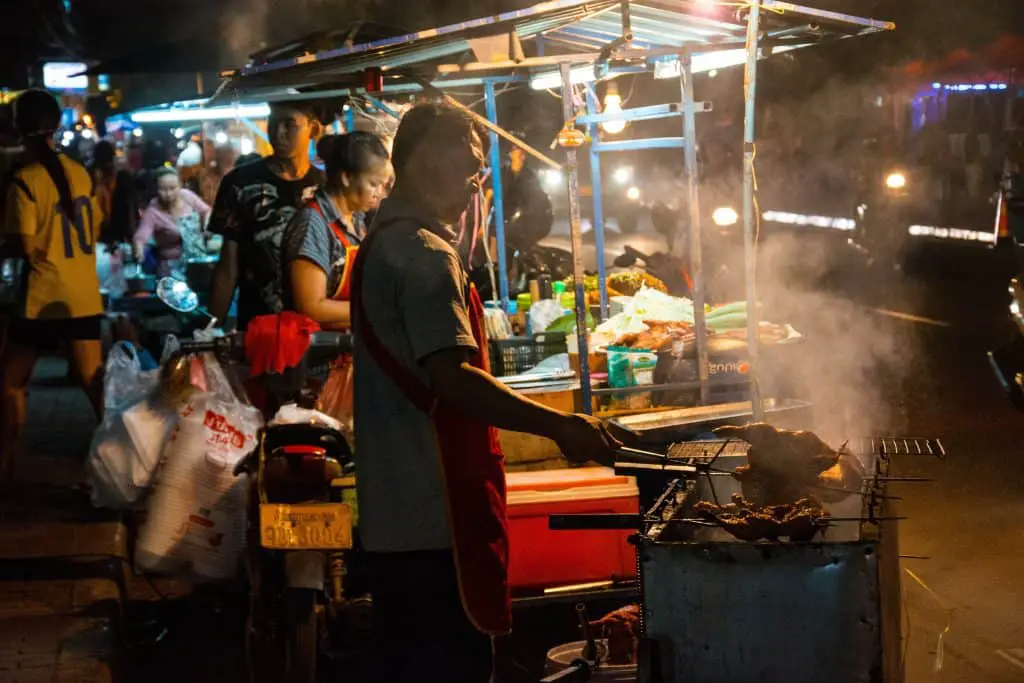
Laos shares its borders with Vietnam and Thailand. Its cuisine is similar to Thai cuisine though it may not be considered to reach the acclaims of its neighbor’s food culture. Once one of the least developed countries globally, the country is making some steps towards development. The cost of lower-cost living in Laos is one major crowd-puller for digital nomads looking for a place to retreat and have some R and R as it is generally not a fast-paced country.
Food is generally affordable with both budget options and more pricy menus available. Popular traditional dishes in Laos include larb, sticky rice, and tam mak hoong. Made from a combination of spices and marinated fish or meat cooked or served raw, larb is Lao’s most popular and well-known dish. The street food scene in Laos is minimal, with few street food vendors. It’s affordable but may not be to the standard you may be used to if you are familiar with Thai food.
Although general living expenses are cheap in Laos, commodities like electronics, medical care, and clothing usually are more expensive than the country’s Southeast Asian counterparts. Clothing sizes are pegged in Asian sizes, and it may be challenging to find the right fit for you if you need to purchase clothes and shoes.
Here some prices for basics to give you a benchmark for comparison of the kind of budget consideration you’d have to make as a digital nomad:
- Imported beer would cost you $1.80 for an 11 oz. and $ 1 for a local beer.
- You can pay between $1-2 for a meal from a street vendor or simple restaurant.
- If you are looking for a more standard restaurant or café meal, then $7 should cover you. Generally, if your want more western-styled food and drink, your food costs can significantly increase due to the added cost of imported products.
- A standard one-bedroom apartment costs, on average, $470 in the capital city.
- For an average hotel room in a three-star hotel, you can pay a nightly rate of $25 and includes air-conditioning and cable TV. Other hotels charge separately for the addition of AC or a fan.
The Weather in Laos
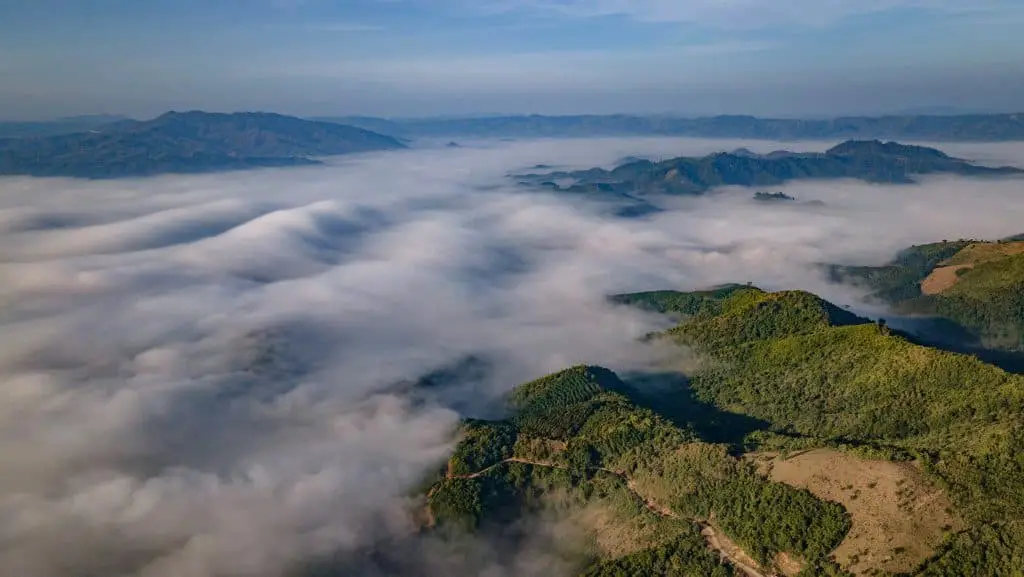
Laos has distinct wet and dry seasons. The wet season is Laos’ monsoon season. This season is hot and lasts six months, from May to October, with moderate rainfall, which can persist a few hours. The monsoon season has high humidity levels, which peak in August. Travelling can be difficult during the wet months, especially in the rural areas which generally have unpaved roads, so this may not be the most favorable time to visit. As a digital nomad, mobility is usually a huge asset when you want to travel around the country and find ideal working spots. The northern part of the country experiences more rain than its southern counterpart.
The dry season has six cooler months, from November to April. Laos experiences milder weather from November to February, after which the temperatures start to pick up in March and April with warmer weather. The south end of the country tends to experience hotter weather, with temperatures getting to as high as 87.8oF (31oC).
The dry season highs in the north, e.g., Luang Prabang, are sizably lower than the south with maximum temperatures of 27oC.
Finding Accommodation in Laos
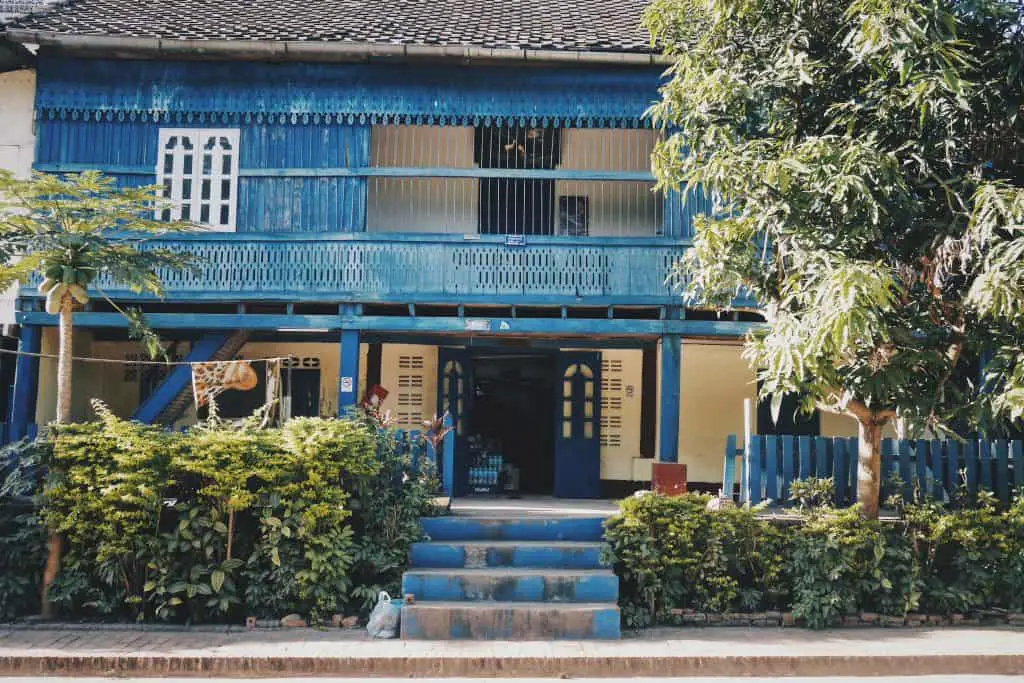
There are various accommodation types available in Laos that can accommodate a modest budget. Still, the lower your budget, the more you may have to compromise on things like air-conditioning and a good aesthetic. There are several guesthouses, hostels, hotels, and Airbnb options to choose from.
Most guesthouses and hotels have extremely slow internet and, therefore, not ideal for getting any online work done.
Money in Laos
It is not always easy to find an ATM in Laos, so it is best to keep enough cash on you for a few days to pay for essentials like food and travel as such services usually do not have online payment options. Many local businesses do not accept credit or debit cards.
If you want to transact better in Laos, it is best to open a bank account in a neighboring country rather than in Laos, as local private banks offering tourist visa accounts have been known to close along with the money you had deposited in your account.
Language in Laos
English is generally not widely spoken among the populace though the younger generation understands the language as they have better access to learning English. You should be able to find someone who can understand English at most outlets commonly utilized by tourists, such as hotels and banks.
Visas and Documentation in Laos
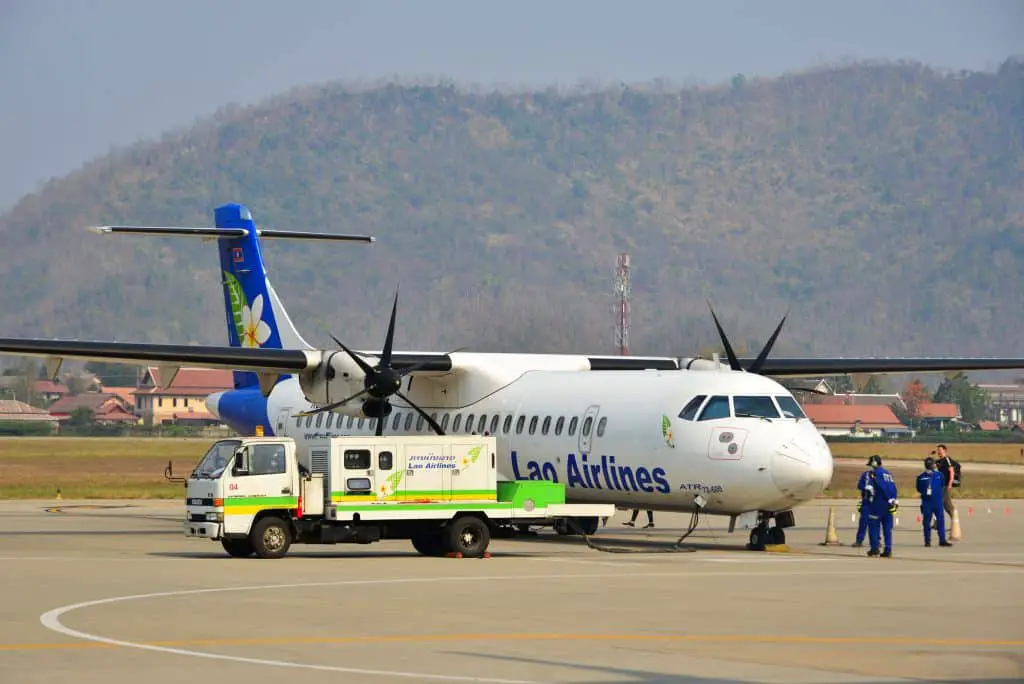
Laos is the right place for a visa run but be prepared to pay for your visas, and other documentation in cash as online payment methods may not be available.
Eligible citizens may apply for an online visa by completing Laos’s eVisa application form. Personal, passport, and travel information are required. You also need to provide a colored passport-style photo and a copy of your passport. Additional documents may be requested. The eVisa is available for five ports of entry and is valid for up to 60 days.
The Lao government issues visas on arrival as 30-day tourist visas on arrival at the country’s international airports and the majority of its international border crossings. You just need to have the prerequisite documents such as a passport with at least six months validity, cash, a passport photo, and the name of where you intend to stay, e.g., a guesthouse or hotel.
The Top Destinations for Digital Nomads in Laos
Vientiane
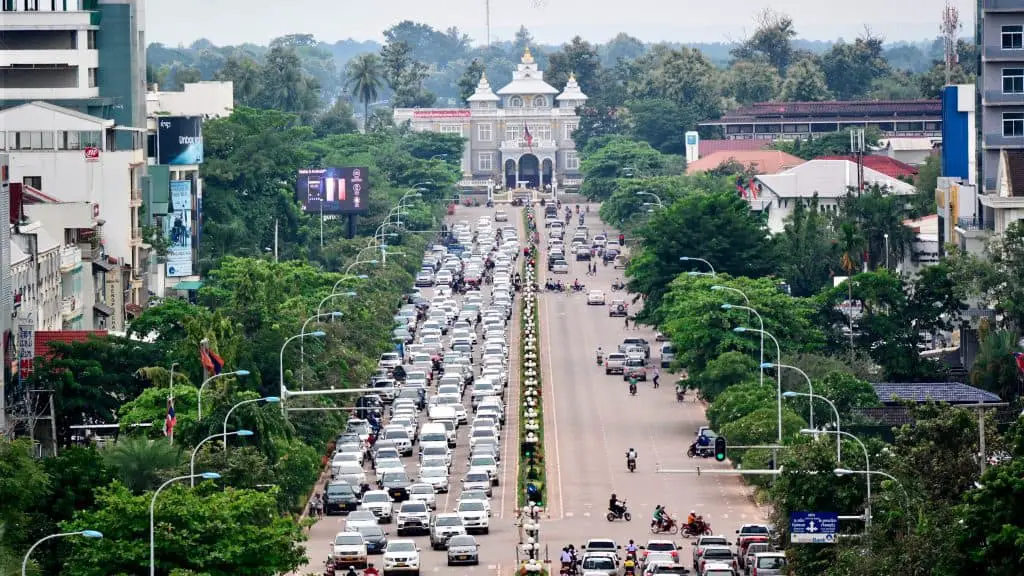
Located northeast of the Mekong River, Vientiane is both the capital and the largest city in Laos. The river is Vientiane’s primary access way for transportation and extensive rice cultivation. The city has several historical and exciting places to see. You can see the fantastic panoramic views of the city from the top of the Patuxai Victory Monument after an excellent workout up the stairs. The Patuxai is a remarkable arch constructed in the 1960s as a war memorial inspired by the Arc de Triomphe in Paris but with Laos styled decorations and ornaments.
You can also visit the legendary Pha That Luang stupa, believed to enshrine one of Buddha’s breast bones and the most significant Buddhist monument in Laos.
The well-known and available coworking spaces in Laos are mainly found in its capital, Vientiane. It is not always easy to locate these spaces, and it’s best to get help from the local people or expats who stay in the city.
Many digital nomads visiting Vientiane utilize its many comfortable and neat cafes that usually have Wi-Fi. You just need to order something while you work. Laos is generally an extremely laid back and friendly country, so you can get a lot of work done.
A quintessential of the digital nomadic lifestyle is the internet. Unfortunately, it is generally slow in Laos, and visiting Laos when you have urgent deadlines to meet or need to carry out regular online work, is not advisable. It is best to stay for short stints when you do not have pressing online work.
Since the internet is not always reliable and can be slower than what you are used to, plan to get more of your offline work done while in Laos to avoid frustration and disappointment. You can go online when it is necessary and for shorter assignments or tasks. Electricity is not always reliable either, so some facilities have a standby generator to deal with the power cuts. It may be an excellent feature to look out for when looking for a café to work from.
Toong Samsenthai Coworking Space
Since you cannot always control the noise levels in a café or diner, especially around mealtimes, finding an adequate coworking space to work from right throughout the day can increase your productivity if you have a lot of work to get through.
The Toong Co is a coworking space with a group of 10 different outlets around Asia. You can find hot desks and offices for your work requirements. This coworking space is an ideal working environment with great aesthetics and stylish design.
The administrative team is hospitable and prioritizes customer service. There several spaces you can work from, including a library with rocking chairs. You can use a daily pass or rent a monthly desk.
Luang Prabang
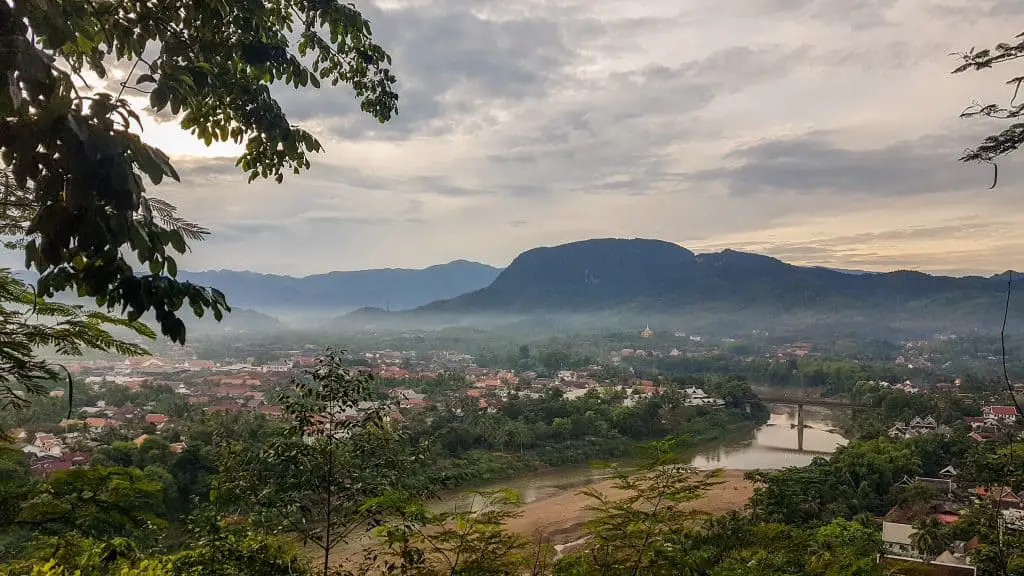
The small town of Luang Prabang is a must-see when visiting Laos. It is considered the most beautiful city in the country. The city boasts of a UNESCO World Heritage Site designated to its colonial architecture and notable Buddhist temples. Luang Prabang is a great getaway to experience Laos’s culture and pamper yourself.
Luang Prabang offers a unique cultural experience that includes tours to the various temples and palaces where you can observe the monks about their daily ceremonies, taste the unique flavors of Lao-French cuisine, and incredible sunsets surrounded by the lush landscapes. You can get a better view of the beautiful town by taking a river cruise along the watercourse or visit the Kuang Si waterfalls.
Besides Vientiane, this is one of two cities with better internet but still not reliable for work needs. Electricity is also a problem. There are no coworking spaces in Luang Prabang, but there are several cafés you can work from.
The northern areas of Laos practice slash–and–burn agriculture from March until the beginning of October, when the monsoon season starts. The air is usually filled with smoke, so it may be better to avoid these areas during the smoky months.
Vang Vieng
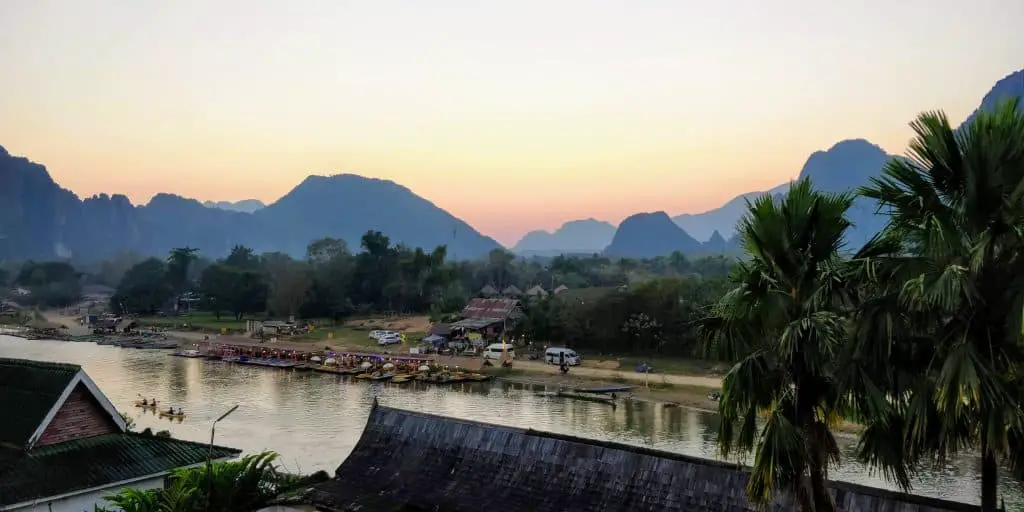
This riverside town, a four-hour bus ride from the capital, has been known for its outdoor adventure. The relatively cheaper charges in Laos can afford you a short ecological experience in untouched landscapes at an affordable price.
Vang Vieng has pristine and scenic outskirts that you can explore on bike or motorcycle. There are tropical forests, rural villages in authentic Laotian-styled houses, and striking blue lagoons. There is so much to see, including a range of wildlife species, the cool water of the Kaeng Nyui Waterfalls, and classic wooden bridges.
Over the years, this small city had budded into a vacation locale known for noisy parties, tubing, and adventure, but this is no longer the case after 27 tourists died during a party by the river. The town authorities had to clamp down on the excessive partying, loud music, ‘death slides,’ and numerous bars that operated along the riverside.
The town is not an ideal location for digital nomads but works more as a weekend getaway or a short vacation break. Activities you can try out in Vang Vieng include kayaking along the river, rock climbing, biking, traditional Lao-style steam sauna, jungle and cave visits, and going down a zip line.
Feel free to add your tips, ideas, destinations or tricks in the comments below. We’re always looking for more info to add to this ultimate guide to Laos for digital nomads!


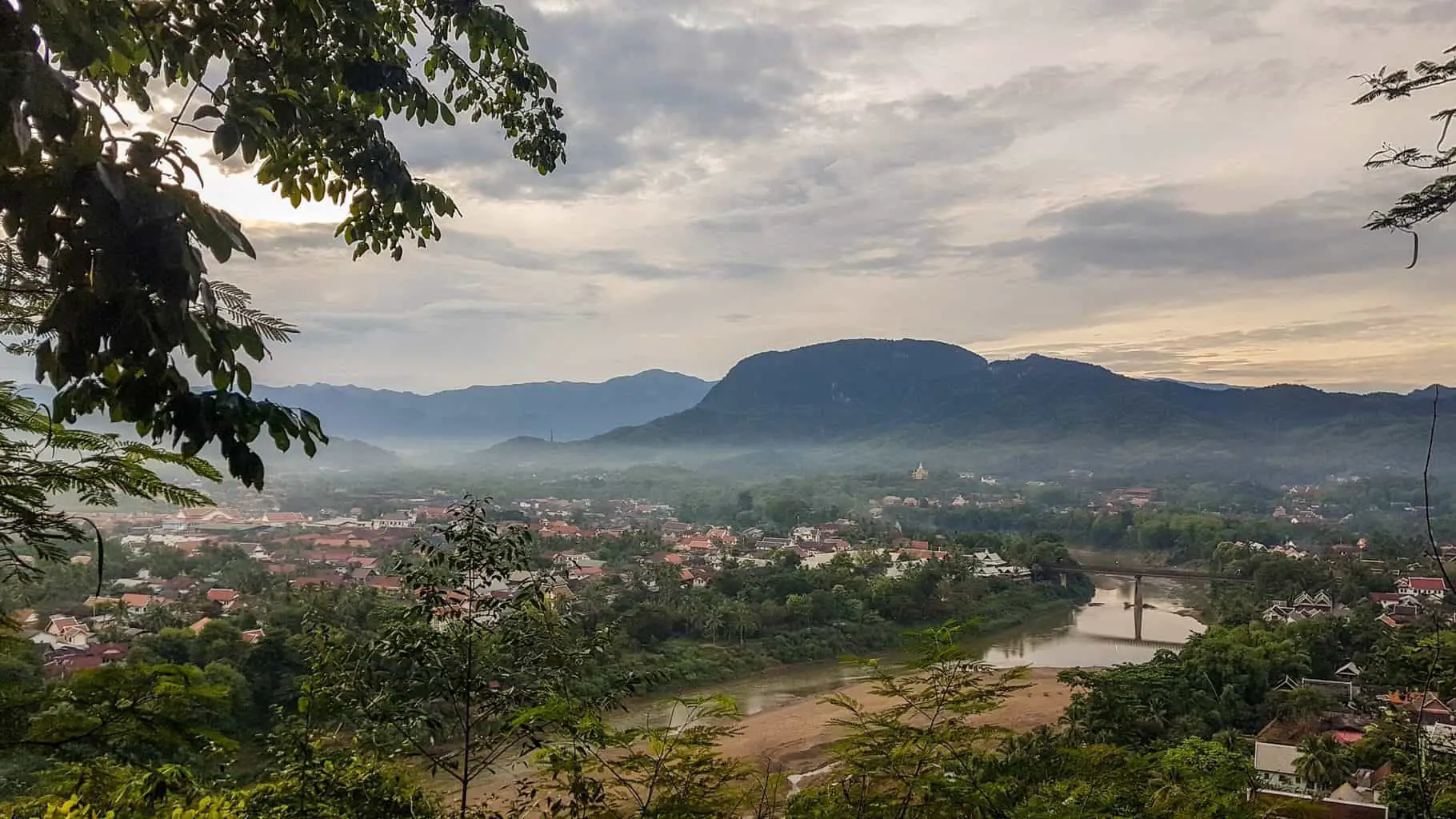



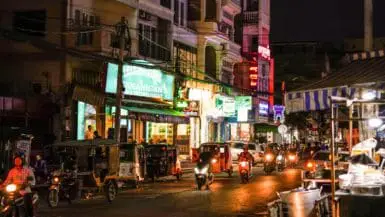
Leave a reply